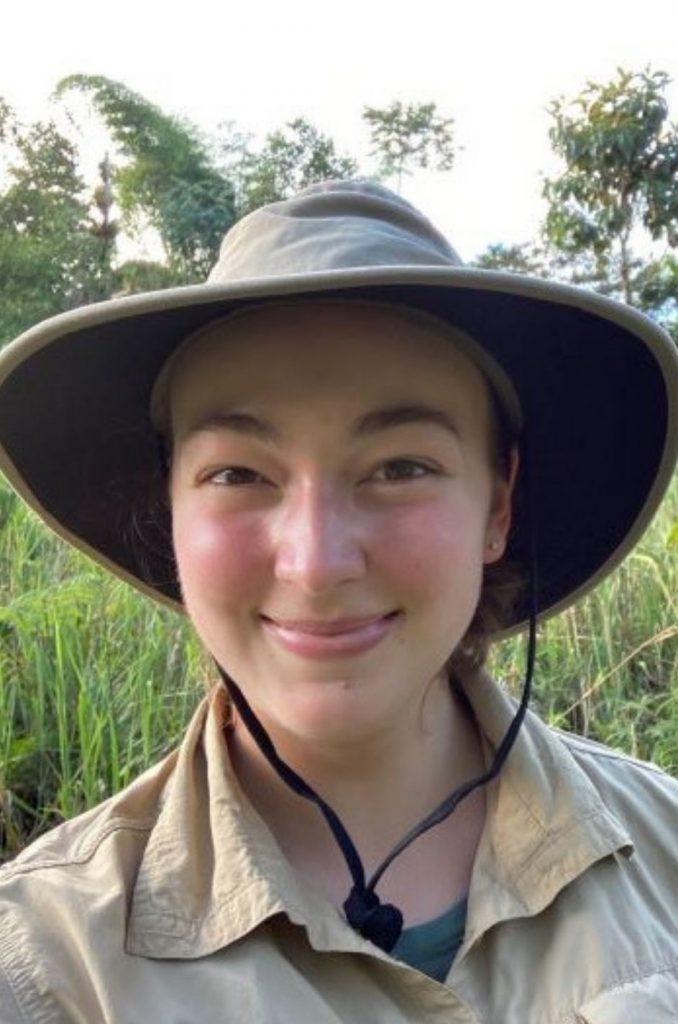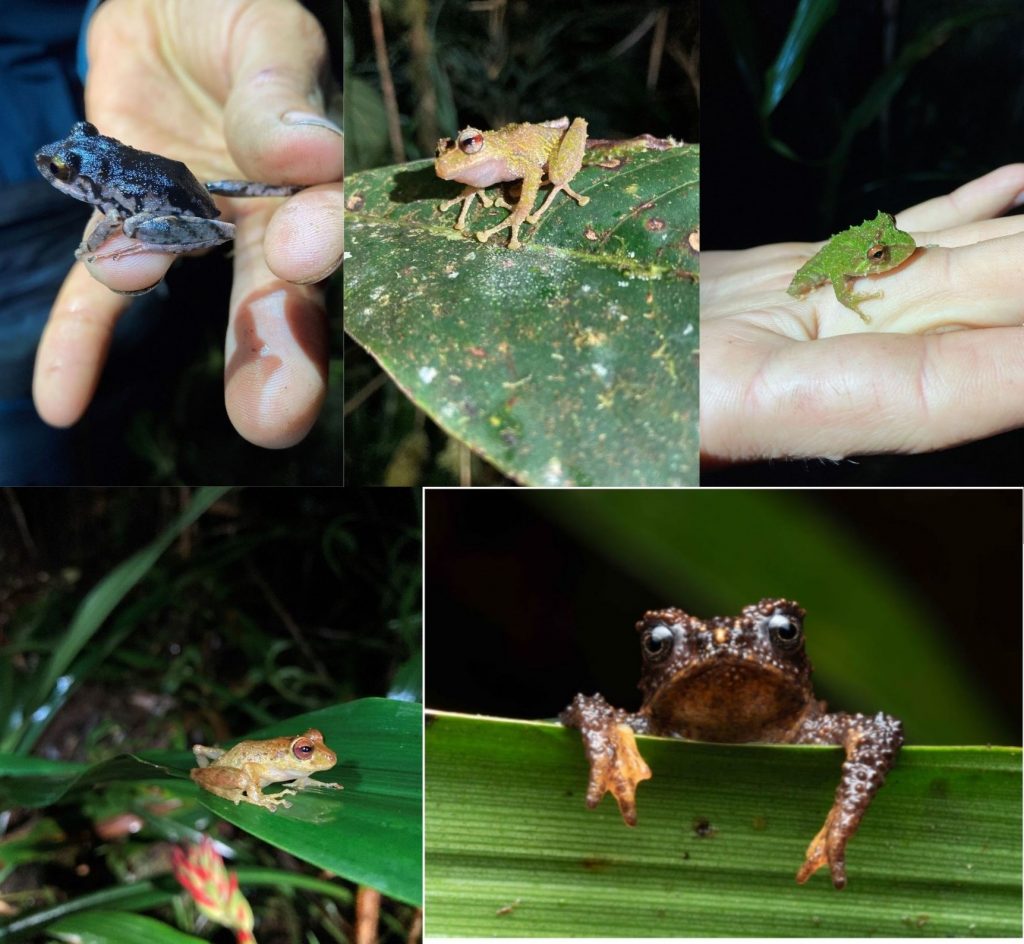Alumni unearth seven potential frog types
SIT Ecuador trek breaks new ground in Pristimantis genus awareness
April 20th, 2022 | SIT Study Abroad

Ecuador boasts extraordinary biodiversity. Over the years, students on SIT’s Ecuador: Comparative Ecology and Conservation program have discovered a potential new species of frog, a marsupial mammal, and an ant. But when Ella Halbert went on a survey expedition in the Llanganates National Park, she found what, so far, look like seven new species of frogs.
Ella, who is from Nashville, Tennesee, attends Oberlin College as a biology and Hispanic studies double major. “The expedition was hands-down the most difficult thing I've ever done,” she says. “The conditions required extreme mental and physical toughness. I had never even been camping before going on the expedition, but I decided that it was a challenge I wanted to undertake.”
- Read Ella's Independent Study Project
Dr. Xavier Silva, academic director of the SIT program, says that finding so many potential new species at once is unusual, even in a place with the biodiversity of Ecuador, where around four new species of amphibian are found each year. “This is due to the fact that some amphibians tend to be hyper endemic, which means that they are only found in a small and specific area of the forest, especially in Andean cloud forests,” Silva says.
Ella took on the unusual challenge of a camping expedition to compare animals living along a newly cut trail that ended at high elevation, examining spots all along the way.
“We hiked to increase elevation during the day,” Ella explains, “and at night we visually surveyed for frogs and took pictures to record all individuals we found. The only exception was when we encountered a potentially new species, in which case we did collect the individual for later molecular analysis.” Included in their records were temperature, humidity, canopy cover, and soil pH.

Ecuador is the sort of place that attracts SIT alumni. In 2018, program alumna and PhD student Jenny Howard (SIT 2008), spent months camping on an island in the Galápagos archipelago to study a seabird called the Nazca booby. The same year, two other program alumnae won grants to continue research on a newly discovered tree species.
The lead researcher with whom Ella worked was Zane Libke, a 2019 alum of program who returned to Ecuador last year after receiving a grant to add portable genetic sequencing to the tools available at Sumak Kawsay In Situ (SKIS), the station where SIT students conduct research.
- Read Zane's account of his return to Ecuador on the SIT blog.
Alex Bentley, the research coordinator at SKIS, is another program alum. He returned to Ecuador after his time there with SIT in 2015. It was through SKIS that Ella got the chance to go on the lengthy trip along the new trail. She was joined by Zane, volunteer herpetologists, and park staff from Llanganates.
I really liked thinking about the connections between organisms and environmental factors within ecosystems, which strongly parallels the way that myriad factors influence individual health.
Ella Halbert
Alex says the work involved “biodiversity comparisons between lowland and highland, with sampling mostly at night.” The sampling took place primarily visually, but also involved surveys of frog calls.
Ella says most of the species the group observed were of the genus Pristimantis, which contains about 570 species (and counting). With so many, she says, “accurately identifying these species takes a lot of time and practice. Another interesting characteristic of frogs in this genus is that they are direct developers, meaning they don't go through a tadpole stage.”
Alex explains that species identification with similar frogs comes down to some interesting characteristics, such as the relative lengths of a frog's fingers, and the details of its tympanic membrane. Thanks to the portable molecular lab Zane helped bring, researchers at SKIS can also check species at a genetic level with a toe clipping.
Silva says confirming new species involves at least several months of examining “comparative DNA testing, morphometric measures, skin compounds, even behavior and vocalizations if possible.”
There was a lot of variety in body color and skin texture among this group that we believe is a new species, but the toes were always consistent.
Ella Halbert
Though she says it was hard to pick a favorite among her discoveries, "If I had to choose from among the potentially new species, I would say the one we dubbed ‘sp. nov red toes,’ because of its characteristic red toes! There was a lot of variety in body color and skin texture among this group that we believe is a new species, but the toes were always consistent."
Ella plans to go into human biology via medical school when she graduates from Oberlin. Her time studying frog species in Ecuador played a role in that decision. "My experience with SIT, specifically the Independent Study Project, helped solidify my interest in a scientific career, and I really liked thinking about the connections between organisms and environmental factors within ecosystems, which strongly parallels the way that myriad factors influence individual health."
She recommends the SIT Ecuador program particularly to students who are interested in field science, ecology, and conservation. "The habitat was rugged but beautiful, and the research station truly is ‘in situ,’ right at the foot of the Llanganates National Park."
Her experiences with the program were unparalleled," she adds. "I was able to travel to so many different ecosystems within Ecuador, including the Galápagos Islands, which was a game-changer for me. There is a really high quality of interaction with local communities and with the environment itself, making this trip truly special.”
